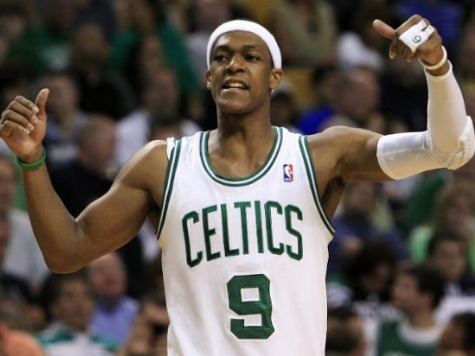To tank or not to tank? That is the question the Celtics, Lakers, and ’76ers ponder in the home stretch of the 2013-2014 regular season. Once proud franchises that competed for NBA championships now race to the bottom for privileged placement in the NBA draft lottery.
Players flop. Teams tank. Players admit feigning for fouls. But GMs don’t cop to self-sabotage for draft picks. That is, they didn’t until now.
“Admittedly, I tried to tank a couple of years ago,” former Toronto Raptors GM Bryan Colangelo bluntly announced at a sports conference at MIT on Friday. “I didn’t come out and say, ‘Coach, you have to lose games.’ I wanted him to establish a winning tradition and culture, but I wanted him to do it in the framework of playing and developing young players.”
Colangelo speaks of the 2011-2012 season, when the Raptors went 23-43 under new head coach Dwane Casey. Colangelo and the Raptors parted company after last season ended. They’re currently the third seed in the Eastern Conference, Exhibit A in why teams tank.
Like armadillos in Texas, franchises in the NBA don’t want to be in the middle of the road. Executives hope to battle deep into the playoffs or to rebuild from the bottom up. Treading water means an eventual drowning in the league. So some teams stock their rosters with untested young talent, which isn’t so much tanking as it is rebuilding. In other cases, when coaches continually sit star players and NBA teams take on the characteristics of the Washington Generals, it’s tanking.
In December, when the Celtics played above their talent, fans wondered whether Coach Brad Stevens was messing up president of basketball operations Danny Ainge’s grand scheme. Relief ensues now that the green are nineteen games below .500. This week, when an injury fell Gerald Wallace or when news hit that star point guard Rajon Rondo skipped a road game without authorization, pundits inevitably interpreted the setbacks as advances because they perceive the team’s ultimate aim as a better spot in the lottery rather than in the standings.
“But watching them do this is hard on the eyes and harder on the soul,” the New York Post‘s Mike Vaccaro observes. “Not long ago the Celtics looked like the surprise team of the NBA, and Stevens looked like he just might have brought some pixie dust with him from Butler…. But that was many moons and several transactions ago, before Danny Ainge rearranged the tracks on this season, moves for which he was hailed when they happened and will again be praised if things work out in the next few drafts the way he hopes. Boston has nine first-round picks the next five years. It makes sense to do what they’re doing.”
But what they’re doing is losing. What the professional sports leagues, particularly the NBA because of the effect one player can have on a team, are doing is incentivizing defeat. The NBA designed the weighted lottery system to undermine tanking. But any draft that awards the best player to the worst team necessarily rewards bad teams going through the motions. Losing on purpose only makes sense under a system that perversely rewards losing. Reverse-order drafts, in which the last in wins becomes the first to pick, foster competition by enabling losers to become winners quickly. They undermine competition by incentivizing the practice of tanking.
The Celtics at least have those gazillion first-round picks to look forward to. Why do the Knicks, also occupants of the Eastern Conference cellar but without a 2014 first-round pick, play so poorly?
Some teams tank. Others just stank.

COMMENTS
Please let us know if you're having issues with commenting.